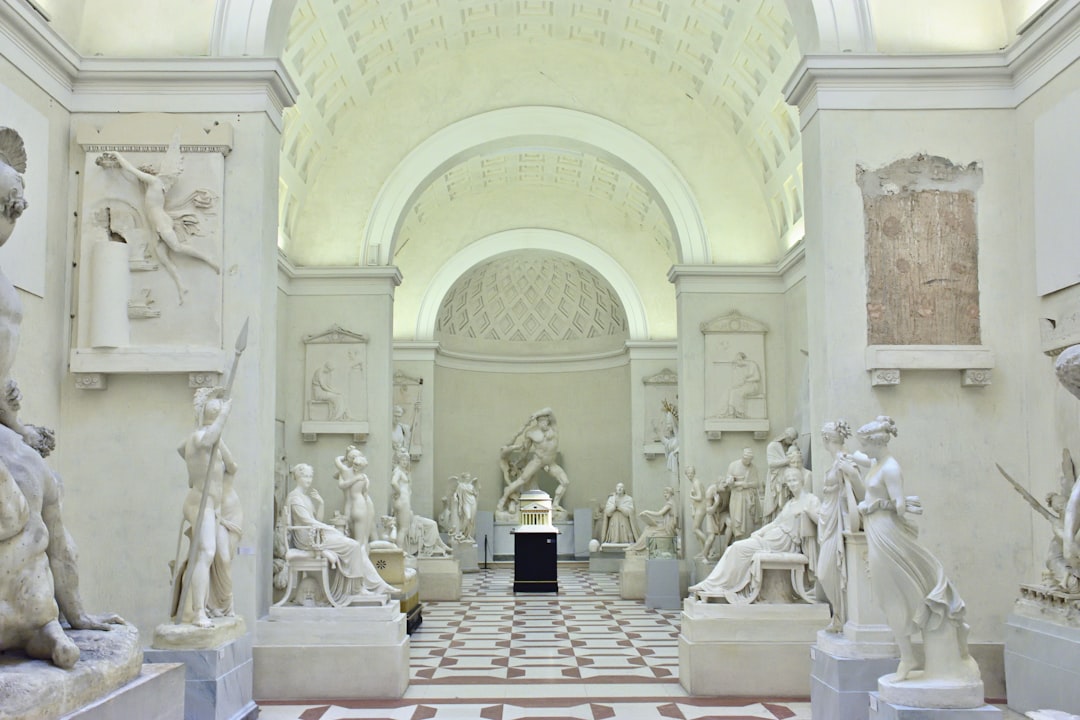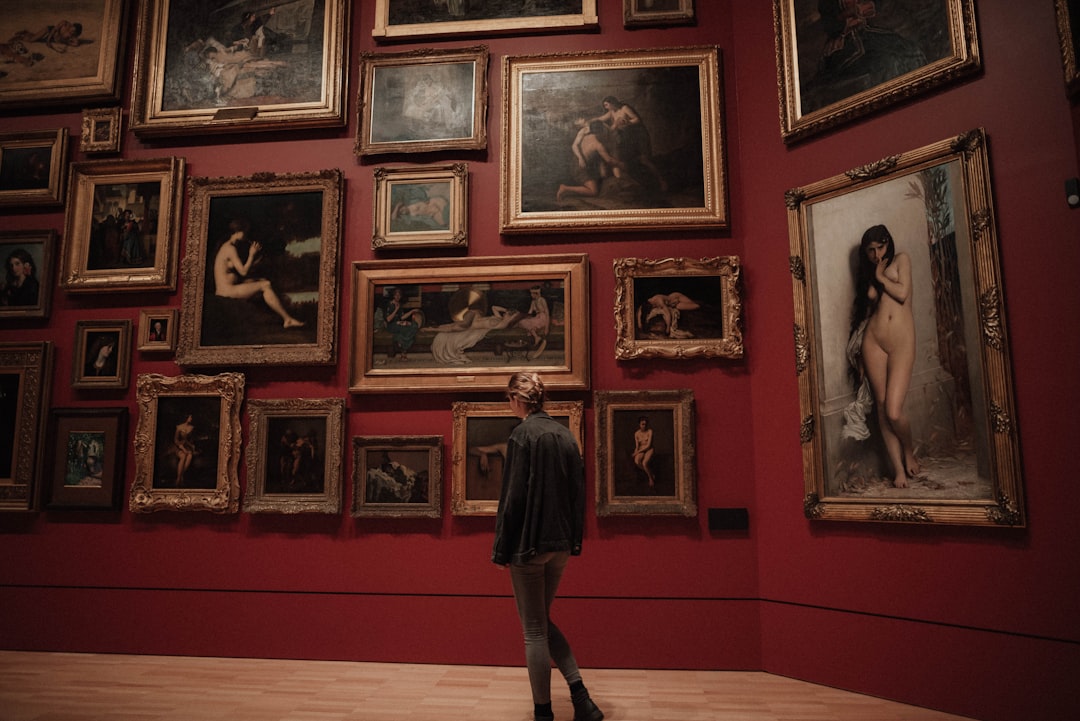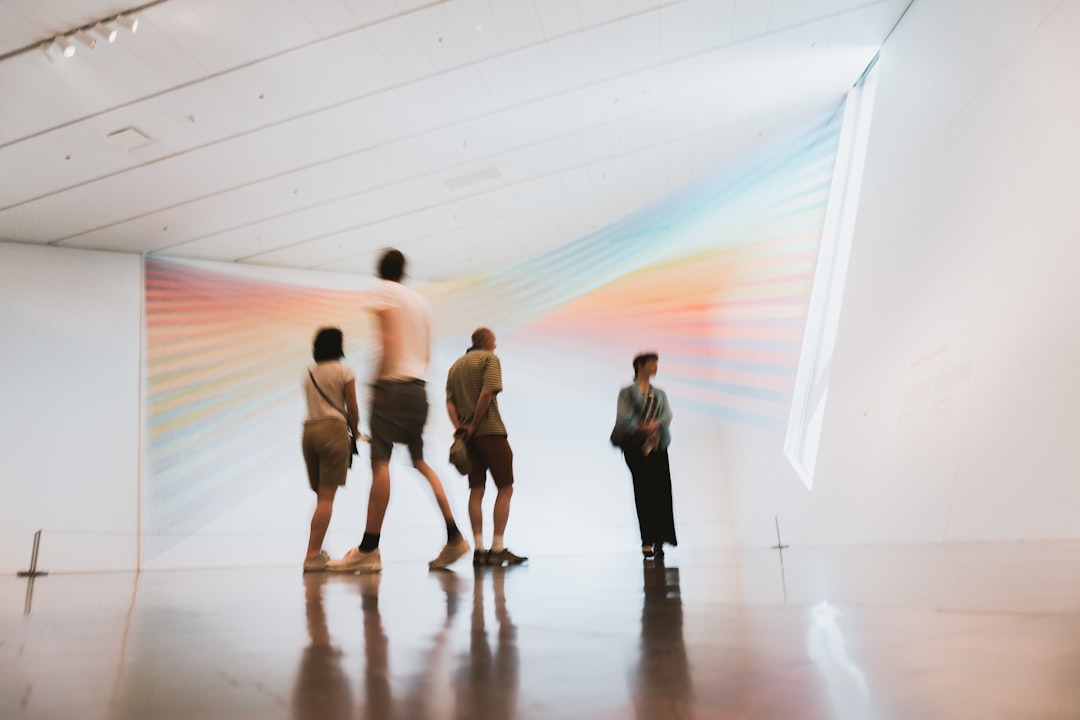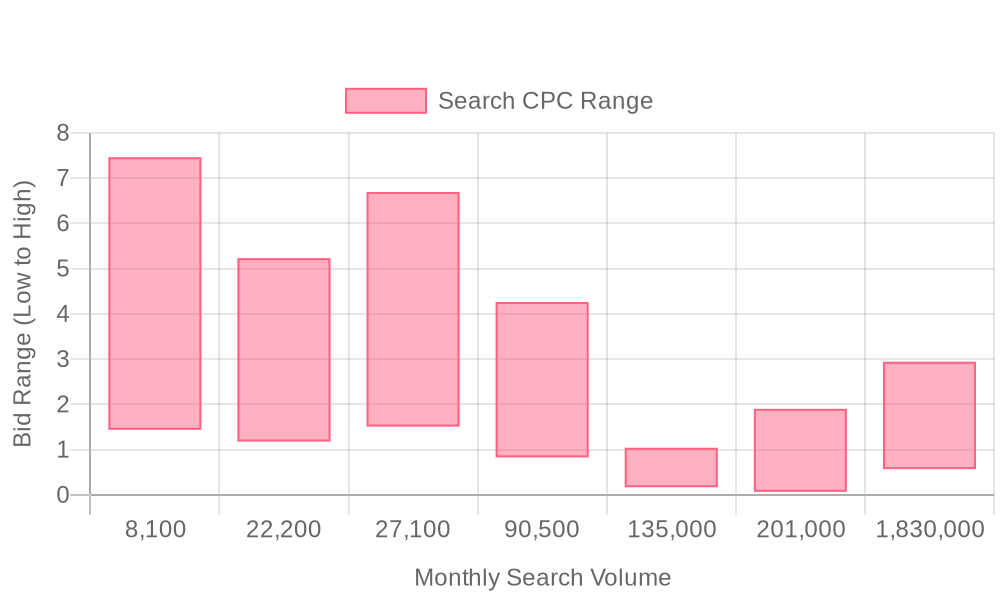
Supercharge your lead generation with a FREE Google Ads audit - no strings attached! See how you can generate more and higher quality leads
Get My Free Google Ads AuditFree consultation

No commitment
Supercharge your lead generation with a FREE LinkedIn Ads audit - no strings attached! See how you can generate more and higher quality leads
Get My Free Google Ads AuditFree consultation

No commitment
Supercharge your lead generation with a FREE Meta Ads audit - no strings attached! See how you can generate more and higher quality leads
Get My Free Google Ads AuditGet My Free LinkedIn Ads AuditGet My Free Meta Ads AuditFree consultation

No commitment
Supercharge your lead generation with a FREE Google Ads audit - no strings attached! See how you can generate more and higher quality leads
Get My Free Google Ads AuditFree consultation

No commitment
In today's dynamic marketing environment, museums face the challenge of standing out both online and offline. A key issue is the difficulty in attracting niche audiences interested in cultural experiences—a concern that goes beyond traditional marketing techniques. Google Ads offers a strategic advantage by capturing the attention of potential visitors at the exact moment they're searching for cultural experiences. This middle-funnel tool bridges broad awareness campaigns and direct engagement, creating a seamless marketing ecosystem for museums. By intercepting searchers at their moment of need, precisely targeting based on cultural interest, and measuring end-to-end online and offline interactions, Google Ads can be a game-changer for museum marketing strategies. For museums looking to increase foot traffic and digital engagement, implementing targeted Google Ads can transform how they connect with their audience.
Cultural institutions operate in a fast-evolving digital landscape, where generating real-world museum visits requires strategies that translate online curiosity into measurable action. Google Ads provides a direct line to high-intent audiences, allowing museums to capture and nurture prospects as they explore cultural and educational experiences.
Adopting a data-driven PPC approach ensures each click and interaction is accounted for, aligning tightly with institutional goals such as driving ticket sales, memberships, and donations. With advanced platforms, marketers can move past generic impressions and instead identify specific visitors and organizations engaging with ads, maximizing the precision of every campaign.
Strategic keyword targeting is essential for connecting with visitors who actively seek out museum-related content and experiences. By researching and selecting terms that resonate with potential guests—such as exhibit themes, events, or educational programs—ads are positioned to surface at the right moment in the decision-making process. Google Ads strategies provides a detailed look at how cultural institutions can leverage paid search to attract more visitors.
Compelling ad creatives play a pivotal role in differentiating a museum’s brand while telling a story that resonates with specific audience segments. Whether promoting a new exhibition or highlighting behind-the-scenes access, creative assets should reflect the institution’s mission and values. Dynamic audience segmentation allows campaigns to adapt as users move through the funnel, updating messaging for first-time visitors, returning guests, and prospective members to drive deeper engagement.
Optimization techniques are fundamental to delivering ROI on ad spend and addressing the common challenge of justifying marketing investment in the nonprofit sector. With robust conversion tracking, museums can accurately attribute both online and offline outcomes—such as physical visits, event attendance, and donations—to specific ad campaigns. For more insights on boosting Google Ads performance, check out our guide on Boosting ROAS.
A unified digital marketing strategy ensures that Google Ads efforts are fully in sync with broader museum marketing practices. By maintaining cohesion across paid search, organic content, and email outreach, institutions can provide a consistent experience to potential visitors, reinforcing their brand at every touchpoint. This holistic approach strengthens visitor engagement, making digital advertising a key driver of sustainable growth for museums in an increasingly competitive environment.

Google Ads provides museums with a direct channel to reach audiences searching for cultural experiences, delivering high-intent traffic that is more likely to convert into visitors, donors, or members. This platform bridges the gap between online discovery and in-person engagement, offering museums a measurable, results-driven approach to digital marketing.


Museums aiming to grow digital awareness and visitor numbers must identify and capitalize on untapped demand. By combining precise keyword targeting and real-time audience insights, institutions can connect with high-value segments that standard campaigns often miss.
Growth-focused museums that unify cross-channel data can pinpoint not just anonymous traffic but specific companies and patrons engaging with their digital content. With instant access to in-market behavioral signals, teams can dynamically shift budget toward campaigns proven to attract high-intent visitors, measure both online and offline conversions, and sync enriched audience data into their CRM and ad platforms. This unified, data-driven approach turns every digital interaction into an opportunity for measurable growth.

Museums face unique challenges in converting digital engagement into real-world visits. Audience segmentation provides a tactical foundation for aligning campaigns with diverse visitor profiles, maximizing every marketing dollar while ensuring relevancy and measurable impact.

| Industry | Keyword | Monthly Search Volume | Competition Level | Low Bid | High Bid |
| Museums | uffizi gallery tickets | 8100 | MEDIUM | 1.44 | 7.46 |
| Museums | louvre museum tickets | 22200 | MEDIUM | 1.18 | 5.23 |
| Museums | louvre tickets | 27100 | MEDIUM | 1.51 | 6.69 |
| Museums | van gogh museum | 90500 | HIGH | 0.83 | 4.26 |
| Museums | natural history museum | 135000 | MEDIUM | 0.17 | 1.04 |
| Museums | metropolitan museum of art | 201000 | MEDIUM | 0.07 | 1.9 |
| Museums | museums | 1830000 | LOW | 0.57 | 2.94 |
Museums competing for attention in a crowded digital landscape can achieve measurable impact by aligning keyword strategy with the nuanced intent of their visitors. Capitalizing on high-intent search queries ensures that marketing budgets are focused on audiences most likely to convert, from first-time tourists to returning members.
Effective google ads for museums begin with precision in keyword development. By integrating terms such as “art gallery tours” and “museum workshops near me,” marketers can capture high-intent audiences who are actively seeking unique cultural experiences. Incorporating long-tail keywords tied to signature exhibits or seasonal events further sharpens this focus, attracting visitors who are ready to engage with specific offerings. For more ideas on keyword targeting and structure, Google Ads for Museums provides a deeper look at this trend. Introducing negative keywords, such as terms related to employment or unrelated educational programs, helps eliminate wasted spend and ensures ad budgets are directed solely toward relevant, conversion-prone searches.
Using unified audience intelligence, marketers can now segment keyword strategies beyond broad visitor types to pinpoint companies and individuals who have shown prior engagement or purchasing behavior. This enhanced targeting capability allows for dynamic adjustment of ad groups, ensuring only the most qualified traffic reaches high-value landing pages. As audiences evolve, keyword lists update in real time, reflecting changes in user behavior, trending topics, or exhibit launches—maximizing both ad impact and budget efficiency. If you’re seeking ways to uncover more leads from your website traffic, we’ve covered this in detail in our Google Ads ROI Guide.
Developing ad copy that resonates with museum audiences requires clear articulation of value and a strong sense of urgency. Highlighting exclusive features—such as immersive exhibits, interactive workshops, or limited-time installations—encourages users to take immediate action. Incorporating bold calls-to-action like “Book Your Ticket” or “Reserve a Guided Tour” helps translate curiosity into measurable conversions, supporting both ticket sales and event registrations.
With access to real-time visitor intent data, marketers can now craft hyper-relevant ad messages tailored to where leads are in the engagement journey. For example, visitors who previously explored membership pages can be served ad copy focused on exclusive member benefits or upcoming member-only previews. Tools like Intent Signals help identify these signals, enabling deeper personalization that drives stronger engagement and higher conversion rates.
Landing pages serve as the conversion engine for any successful PPC for cultural venues campaign. Aligning each landing page with its corresponding ad and audience segment ensures a frictionless customer journey. For high-demand exhibits, dedicated pages should feature clear calls-to-action, simple ticket purchase flows, and compelling visuals that immerse visitors in the experience before they arrive. Straightforward download options for educational resources or event schedules remove barriers and support a seamless path to conversion.
Innovative integration of visitor identification tools now enables museums to personalize landing page content based on a user’s prior interactions or organization profile. Platforms like Sona Identification are designed to reveal which organizations or visitor segments are most engaged, allowing for targeted content delivery that consistently lifts engagement and drives measurable improvements in conversion rates.
Continuous optimization is the hallmark of high-performing digital marketing for museums. Leveraging advanced analytics, marketers can monitor every aspect of campaign performance—including click-through rates, cost per acquisition, and on-site engagement—adjusting strategies in real time. Conducting regular A/B tests on headlines, calls-to-action, and creative assets enables teams to identify what resonates best with diverse audience segments and refine campaigns to maximize both ROI and visitor engagement. Google Ads Best Practices shares industry benchmarks for this approach.
Sophisticated attribution modeling, including the ability to track offline ticket sales and in-museum purchases, now delivers a complete picture of campaign impact. With CRM and ad platform syncing, enriched audience segments and lead data flow directly into ongoing campaigns, ensuring that the highest-potential prospects are always prioritized. As leads move through the funnel, retargeting audiences and budget allocations update automatically, allowing marketers to focus investment on accounts showing the strongest intent and accelerating the path to conversion. For more insights, explore our guide on Revenue Attribution.
Effective museum marketing now requires a blend of innovative digital strategies and precise audience targeting. Purposeful use of paid search, retargeting, and intent-driven campaigns can help museums increase both digital engagement and in-person visits.
With unified visitor identification, marketers can pinpoint not just anonymous traffic, but also known individuals and organizations, driving relevant messaging at every touchpoint.
By leveraging enriched audience data and syncing CRM segments into paid campaigns, marketers maximize reach and minimize wasted impressions, ensuring ads are served to the most relevant, high-value prospects in the region.
As in-market behavior shifts, dynamic audience updates keep campaigns aligned with those most likely to engage, allowing budget and creative to follow the highest-converting segments in real time.
Feeding these learnings back into campaign planning ensures marketing stays agile and deeply connected to what visitors care about most, fueling sustained museum visitor engagement and long-term growth.
Leveraging Google Ads effectively can transform how museums connect with audiences, turning curiosity into foot traffic and digital engagement into lasting impact.
From targeting local visitors with geo-specific campaigns to retargeting past attendees with compelling exhibit promotions, the strategies outlined here help museums maximize visibility while optimizing ad spend. By focusing on high-intent keywords, compelling ad copy, and data-driven optimizations, you can ensure your institution stands out in a crowded digital landscape.
Imagine filling your galleries with engaged visitors, driving membership sign-ups, and creating buzz around upcoming exhibits—all through the power of targeted advertising. The tools and tactics are within reach; it’s time to put them into action.
Ready to see the difference data-driven ads can make? Start a free trial to experience our platform and its capabilities.
Museums should adopt a data-driven PPC approach, use strategic keyword targeting, develop compelling ad creatives, and implement ongoing data-driven optimizations to maximize engagement and ROI.
Museums can use Google Ad Grants to target high-intent audiences, promote events and exhibitions, and track conversion paths to measure the effectiveness of their campaigns.
The budget allocation should focus on strategic keyword targeting and audience segmentation to ensure ads reach high-intent visitors, maximizing the return on ad spend.
Search, display, video, and remarketing campaigns are effective for museums, helping to capture high-intent visitors and re-engage users who have previously interacted with their site.
Museums can measure success using robust conversion tracking and attribution models to connect ad engagement with ticket sales, memberships, and physical visits.
Join results-focused teams combining Sona Platform automation with advanced Google Ads strategies to scale lead generation

Connect your existing CRM

Free Account Enrichment

No setup fees
No commitment required

Free consultation

Get a custom Google Ads roadmap for your business
Join results-focused teams combining Sona Platform automation with advanced Meta Ads strategies to scale lead generation

Connect your existing CRM

Free Account Enrichment

No setup fees
No commitment required

Free consultation

Get a custom Google Ads roadmap for your business
Join results-focused teams combining Sona Platform automation with advanced LinkedIn Ads strategies to scale lead generation

Connect your existing CRM

Free Account Enrichment

No setup fees
No commitment required

Free consultation

Get a custom Google Ads roadmap for your business
Join results-focused teams using Sona Platform automation to activate unified sales and marketing data, maximize ROI on marketing investments, and drive measurable growth

Connect your existing CRM

Free Account Enrichment

No setup fees
No commitment required

Free consultation

Get a custom Google Ads roadmap for your business
Over 500+ auto detailing businesses trust our platform to grow their revenue
Join results-focused teams using Sona Platform automation to activate unified sales and marketing data, maximize ROI on marketing investments, and drive measurable growth

Connect your existing CRM

Free Account Enrichment

No setup fees
No commitment required

Free consultation

Get a custom Google Ads roadmap for your business
Over 500+ auto detailing businesses trust our platform to grow their revenue
Join results-focused teams using Sona Platform automation to activate unified sales and marketing data, maximize ROI on marketing investments, and drive measurable growth

Connect your existing CRM

Free Account Enrichment

No setup fees
No commitment required

Free consultation

Get a custom Google Ads roadmap for your business
Over 500+ auto detailing businesses trust our platform to grow their revenue
Our team of experts can implement your Google Ads campaigns, then show you how Sona helps you manage exceptional campaign performance and sales.
Schedule your FREE 15-minute strategy sessionOur team of experts can implement your Meta Ads campaigns, then show you how Sona helps you manage exceptional campaign performance and sales.
Schedule your FREE 15-minute strategy sessionOur team of experts can implement your LinkedIn Ads campaigns, then show you how Sona helps you manage exceptional campaign performance and sales.
Schedule your FREE 15-minute strategy sessionOur team of experts can help improve your demand generation strategy, and can show you how advanced attribution and data activation can help you realize more opportunities and improve sales performance.
Schedule your FREE 30-minute strategy sessionOur team of experts can help improve your demand generation strategy, and can show you how advanced attribution and data activation can help you realize more opportunities and improve sales performance.
Schedule your FREE 30-minute strategy sessionOur team of experts can help improve your demand generation strategy, and can show you how advanced attribution and data activation can help you realize more opportunities and improve sales performance.
Schedule your FREE 30-minute strategy sessionOur team of experts can help improve your demand generation strategy, and can show you how advanced attribution and data activation can help you realize more opportunities and improve sales performance.
Schedule your FREE 30-minute strategy session





Launch campaigns that generate qualified leads in 30 days or less.
